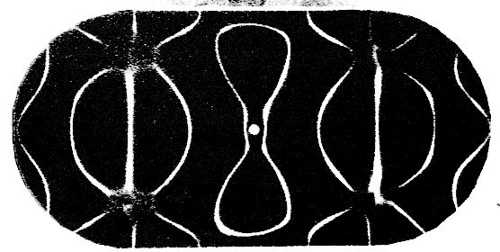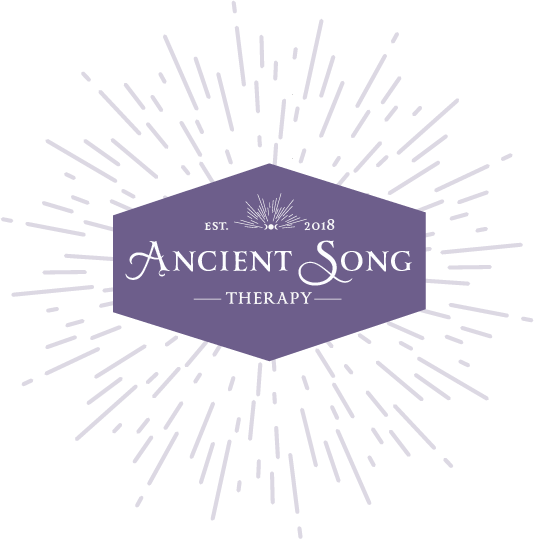What is sound healing?

Sound healing, or sound therapy, is not a new modality. It is undeniable that music and sound affect the body. For centuries, and in all areas of the world, sound has been utilized to maintain health and wellbeing. It is only the concept of applying certain frequencies in a therapeutic setting that is relatively new. Sound healing/therapy is based on the idea that all matter in the universe is alive with vibration, emanating unique frequencies. Systems based on certain types of matter—stone, water, light, pitch, plants, and, indeed, the human body—are in a constant state of resonance.
We know as well that these systems can become unbalanced and fall out of resonance, also known as dissonance, or disease. Illness is caused when a system in a body of matter stops vibrating at its unique frequency. This begins at the cellular level and can be something as seemingly insignificant as being dehydrated to something more invidious such as cellular malignancy, or cancer. Vibratory and sonic therapies can help by sending subtle and penetrating sound waves through the body, down to the cells themselves, returning harmony and ease through frequency and resonance. Restoring this balance to the body and mind is what facilitates healing.
Ancient Origins
Sound healing has roots in ancient cultures around the world. Aboriginal Australians (Yolungu) are believed to be one of the earliest human groups to perform sound specific healing rituals. Use of an instrument called the yidaki (pictured right) was thought to have healing properties useful for various physical ailments, such as broken bones and tissue damage. Ancient Egyptian ceremonialists chanted vocal tones and used instruments such as the sistra/sistrum. And, in ancient Greece, Pythagoras, a mathematician and philosopher, observed the calming effect of an instrument called the kithara on both humans and animals. The concept of the “Music of the Spheres” originates here, and it was his belief that certain frequencies could trigger various emotions, from peaceful to chaotic and stressful.


Throughout human history, certain instruments have been with us for as long as history records. The drum is perhaps the oldest instrument found in human cultures around the world. It is, unsurprisingly, an instrument which captures the essence of our first heard sound, that of the human heartbeat. We also carry another ancient instrument, the instrument of our birthright—our voice. Supremely portable, this instrument has the power to change hearts and minds, clear blocked energy, and ease or agitate. The voice combined with drum can be an ancestral portal, a universal way to communicate with humans and other than humans, and our deepest, most divine self.
Early modern science by Christiaan Huygens, a Dutch scientist, is credited for the discovery of entrainment in the 16th century. Entrainment is the practice of tuning the body to a desired frequency, and this plays a crucial role in modern sound therapies, including VST. Entrainment Occurs when the sound coming from an external source is used to tune the body back into balance.
What Can Sound Therapy Do for Me?
Many people claim to experience feeling rejuvenated after a sound therapy session. When a person seeks healing through sound therapy, their fundamental objective is to listen deeply and allow for self-care.
Self-care is health care. A sound bath or meditation is an opportunity for recuperation, integration, and ease. It is time gifted to oneself that announces I am worth taking care of. Self-care is a radical act, an act of reclaiming the self from the clutches of societal expectations, which so often are completely unrealistic. Here are some of the benefits of adopting a meditative self-care practice:
- Rest and Relaxation – Our minds are constantly processing thoughts, information arrives to us at a rate that is impossible to digest it all, and we are often existing in a state of overwhelm, distraction, and decision fatigue. Meditative practice, one supported by sound, can help stop thoughts in their tracks by offering a focal point that allows the body to deeply relax. Restorative practices such as this has been shown to effectively reduce stress and anxiety (thoughts), relieve physical pain, improve mental and emotional clarity, stimulate the immune system. Ultimately, sound therapy allows one to be fully present in the moment.
- Frequency facilitates healing – As mentioned above, sound therapy and meditation can help free up energy in the body, especially that which is stuck in the mind in the form of thoughts, stress, and anxiety, and create a greater capacity for awareness and management of these emotions. When we are less stressed, our immune system is less tasked. When our immune system is running at full strength, we can heal, or remain healthy. With repetition (frequency), we entrain ourselves to the feeling of relaxation, that feeling of balance and harmony, and are more keenly aware when our body informs us that there is something out of balance. We teach ourselves how feeling better feels.
- Improved sleep – By relaxing our body and mind, letting go of stress and worries, we can attain the ultimate restorative practice—sleep. When we achieve between 6-8 uninterrupted hours of sleep, a cycle in which N-REM and REM states are reached, our body systems are revived and restored, we can stave off disease, and feel more vital and healthy.
- Physical Effects – This may include better joint movement, reduced muscle pain and inflammation, disappearance of kidney stones (medical doctors use a non-invasive sonic therapy), reduced headaches, increased capacity for hearing (especially in people experiencing hearing loss), improved heart rate, blood pressure, body temperature and more.
Some Science, Please
According to Dr. Herbert Benson, Founder of Harvard University’s Mind/Body Medical Institute and author of The Relaxation Response, increased levels of stress have made the nervous system continually activate the “fight, flight, of freeze” response. This can cause an increase in cortisol, a hormone that, when not used for fighting or fleeing, can accumulate and converted into other hormones they body can use or better store (like the sex hormones estrogen and testosterone that get stored as fat). High cortisol levels are also one of the prime causes for inflammatory diseases like hypertension, diabetes, and certain cancers. Scientific studies have shown that sound can produce changes in the autonomic, immune, endocrine and neuropeptide systems of the body. By reducing our chronic stress, and by discovering ways to process and restore after periods of stress, we can build our resilience to stress and resistance to disease.
Researchers from Yale University have performed functional magnetic resonance imaging (MRI) scans on novice and experienced meditators to observe the effects that various techniques had on them. It was discovered that there was reduced activity in the default mode network of the brain when they ran the scan on advanced meditators. The prefrontal and posterior cingulate cortex were the areas particularly affected, and this effect was seen to occur no matter what type of meditation was practiced. The default mode network has been connected to lapses of attention and anxiety, attention deficit and hyperactivity disorder, and even the buildup of beta-amyloid plaques seen in Alzheimer’s disease.

Regarding rest and sleep, the book Why We Sleep by Matthew Walker is highly informative support for how a full night’s sleep, and the alternative, affects the body and the mind. Many sound therapists have had clients or sound meditation attendees fall asleep during a sounding. These individuals are often highly apologetic to the practitioner, embarrassed for violation of some social moray. However, it is a high compliment to not only have facilitated such a state of deep relaxation but also trust, that most practitioners will apologize for having to wake you!
The English osteopath, Sir Peter Guy Manners, uses sound and cymatic therapy to achieve a near-ideal metabolic state in a cell or organ, which in the human body vibrates at a fundamental frequency of about 8 cycles per second. This is the same basic frequency of the electromagnetic field of the earth itself. The science of sound, and the idea of “getting back to the earth” suggests that out disease and discord might be remedied by simply returning to our most natural state. It is intriguing.
Read on for scientific evidence and studies, or further reading on the science of sound:
The future of music in therapy and medicine (Pub Med)
Incidental Music: a case study in the development of sound therapy (British Journal of Music Education)
The Healing Power of Sound by Dr. Mitchell Gaynor

Conclusion
When we allow ourselves to rest, the result can have truly transformational effects on our body, mind, and spirit. Something as simple as deep meditative listening in nature or with a single instrument such as a singing bowl or our own voice can be a radical act of self-care.



Frequencies